
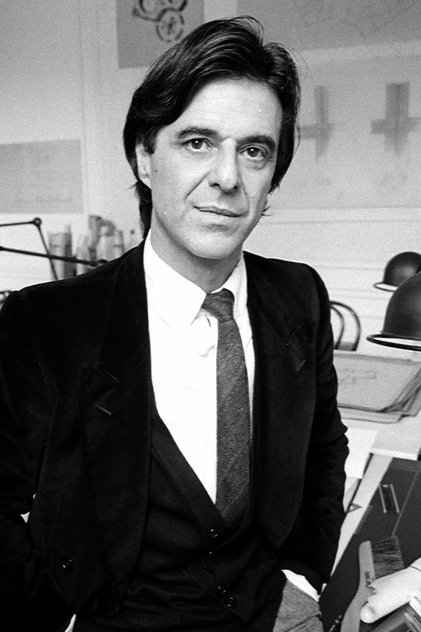
Ricardo Bofill
Born: December 5, 1939
Died: January 14, 2022
in Barcelona, Barcelona, Catalonia, Spain
Died: January 14, 2022
in Barcelona, Barcelona, Catalonia, Spain
Ricardo Bofill Leví was a Spanish architect born December 5, 1939 in Barcelona and died January 14, 2022 in Barcelona. He is particularly known in France for the creation of the Abraxas spaces in Noisy-le-Grand and the Antigone district in Montpellier. His main influences are the architects Palladio, Mansart and Ledoux.
Ricardo Bofill is the son of the Catalan Emilio Bofill y Benessat, architect, and a Venetian, Maria Levi. He began his studies at the French high school in Barcelona, allowing him to master this language. He continued at the Higher Technical School of Architecture in Barcelona, until his expulsion due to his activism in the Unified Socialist Party of Catalonia. He is also part, with other Spanish intellectuals of the 1960s, of the divine left. His anti-Franco action led him to continue his education at the Geneva School of Architecture. He did not return to Barcelona until after Franco's death in 1975. In 1963, he surrounded himself with architects, engineers, sociologists and philosophers, the core of what is today the Ricardo Bofill Taller de Arquitectura. The group moved to Barcelona in 1975 in a former cement factory, La Fabrica, an initiative that has since become commonplace in the artistic world but an innovation at the time. This international team operates all over the world and uses modern techniques and know-how accumulated over more than forty years. The drawing of the city is a discipline extensively studied by the Taller de Arquitectura, particularly in the cities of Bordeaux, Luxembourg and Madrid, as well as Boston in the United States and Kobe in Japan. Among the main projects developed in China are the competition for the Olympic city of Qingdao, Landmark Buildings, a complex of high-rise buildings, the new residential districts "The Reflections and Sunshine Upper East Side", the Shangrila Hotel, all the three completed in 2009. The Antigone district in Montpellier, whose project initiated in 1980 continues to be enriched with new buildings, testifies to this approach: a piece of town designed and built by the workshop.
Among the major infrastructures built in Spain, mention should be made of the Barcelona-El Prat international airport in 1992 as well as its extension, the new terminal T1, delivered in June 2009. In Madrid, the Palace of Congresses (es) is one of the works the most significant of the Spanish capital. In the field of cultural facilities, Ricardo Bofill Taller de Arquitectura realized the Arsenal music center in Metz, the TNC - national theater of Catalonia in Barcelona, the Shepherd music school, within the University of Rice in Houston, and the Miguel-Delibes Cultural Center in Valladolid. Among the office projects built in Paris, the Paribas Marché Saint-Honoré office building and the headquarters of the Rochas, Dior, Decaux, Axa and Cartier companies stand out. Also worth mentioning, in the category of skyscrapers, is the Donnelley Building in Chicago, followed by the very recent Dearborn Center and the representative building of the Shiseido company in Tokyo.
Ricardo Bofill died on January 14, 2022 in Barcelona at the age of 82 from complications related to Covid-19.
Ricardo Bofill is the son of the Catalan Emilio Bofill y Benessat, architect, and a Venetian, Maria Levi. He began his studies at the French high school in Barcelona, allowing him to master this language. He continued at the Higher Technical School of Architecture in Barcelona, until his expulsion due to his activism in the Unified Socialist Party of Catalonia. He is also part, with other Spanish intellectuals of the 1960s, of the divine left. His anti-Franco action led him to continue his education at the Geneva School of Architecture. He did not return to Barcelona until after Franco's death in 1975. In 1963, he surrounded himself with architects, engineers, sociologists and philosophers, the core of what is today the Ricardo Bofill Taller de Arquitectura. The group moved to Barcelona in 1975 in a former cement factory, La Fabrica, an initiative that has since become commonplace in the artistic world but an innovation at the time. This international team operates all over the world and uses modern techniques and know-how accumulated over more than forty years. The drawing of the city is a discipline extensively studied by the Taller de Arquitectura, particularly in the cities of Bordeaux, Luxembourg and Madrid, as well as Boston in the United States and Kobe in Japan. Among the main projects developed in China are the competition for the Olympic city of Qingdao, Landmark Buildings, a complex of high-rise buildings, the new residential districts "The Reflections and Sunshine Upper East Side", the Shangrila Hotel, all the three completed in 2009. The Antigone district in Montpellier, whose project initiated in 1980 continues to be enriched with new buildings, testifies to this approach: a piece of town designed and built by the workshop.
Among the major infrastructures built in Spain, mention should be made of the Barcelona-El Prat international airport in 1992 as well as its extension, the new terminal T1, delivered in June 2009. In Madrid, the Palace of Congresses (es) is one of the works the most significant of the Spanish capital. In the field of cultural facilities, Ricardo Bofill Taller de Arquitectura realized the Arsenal music center in Metz, the TNC - national theater of Catalonia in Barcelona, the Shepherd music school, within the University of Rice in Houston, and the Miguel-Delibes Cultural Center in Valladolid. Among the office projects built in Paris, the Paribas Marché Saint-Honoré office building and the headquarters of the Rochas, Dior, Decaux, Axa and Cartier companies stand out. Also worth mentioning, in the category of skyscrapers, is the Donnelley Building in Chicago, followed by the very recent Dearborn Center and the representative building of the Shiseido company in Tokyo.
Ricardo Bofill died on January 14, 2022 in Barcelona at the age of 82 from complications related to Covid-19.
Movies for Ricardo Bofill...
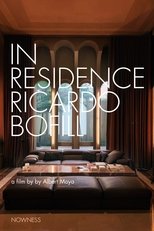
Title: In Residence: Ricardo Bofill
Character: Self
Released: September 22, 2014
Type: Movie
There are houses, and then there’s Ricardo Bofill’s house: a brutalist former cement factory of epic proportions on the outskirts of Barcelona, Spain. A grandiose monument to industrial architecture in the Catalonian town of Sant Just Desvern, La Fabrica is a poetic and personal space that redefines the notion of the conventional home. “Nowadays we want everyone who comes through our door to feel comfortable, but that's not Bofill’s idea here,” says filmmaker Albert Moya, who directed latest installment of In Residence. “It goes much further, you connect with the space in a more spiritual way.” Rising above lush gardens that mask the grounds’ unglamorous roots, the eight remaining silos that once hosted an endless stream of workmen and heavy machinery now house both Bofill’s private life, and his award-winning architecture and urban design practice.

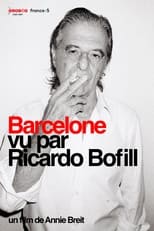
Title: Barcelone vu par Ricardo Bofill
Character: Self
Released: January 1, 2003
Type: Movie
A native of the capital of Catalonia, the architect-urban planner, to whom we owe the Saint-Honoré market in Paris and the Donnelley Building in Chicago, speaks of Barcelona with infectious passion. "It's a unique city, difficult to understand with conventional diagrams, he explains, criss-crossing the main arteries of the city". It is an unfinished city, constantly changing, where everything has the charm of the unfinished". With a sharp eye, Ricardo Bofill observes and comments on volumes and scrolls. Standing, in the nave of the Sagrada Familia, arms outstretched, it pivots on itself as if to take in space. "You have to have your eyes wide open, move quietly, and at the same time remember what's behind. This is how we have the sense of space. Otherwise this art does not exist."

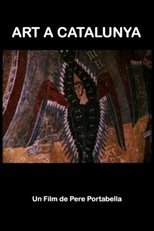
Title: Art a Catalunya
Character: Self
Released: January 1, 1992
Type: Movie
An itinerary through the great creations of Catalan art: Romanesque, Gothic, Modernist and Contemporary; with interviews to Catalan creators such as architect Ricardo Bofill, poet Pere Gimferrer, sculptor Susana Solano, and painter Antoni Tàpies.

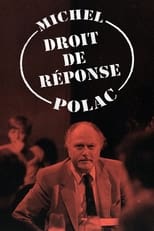
Title: Droit de Réponse
Character: Self
Released: December 12, 1981
Type: Movie
"Droit de Réponse" (Right of Reply) is a French debate program broadcast between December 12, 1981 and September 19, 1987 on the TF1 channel, presented by Michel Polac and produced by Maurice Dugowson. Broadcast live on a weekly basis, on Saturdays from 8.30 p.m., the right of reply has been the source of many controversies, due to the various speakers who have come to present their point of view on the show (which leads to famous scandals , remained in the memory of viewers), but also for the variety and relevance of the topics covered, which ensured the success of the program on the air for several years. On French television, this program is considered by some observers as a “pioneer program in terms of controversy-show or clash, in modern language”.

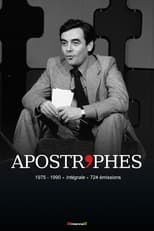
Title: Apostrophes
Character: Self
Released: January 10, 1975
Type: TV
Apostrophes was a live, weekly, literary, prime-time, talk show on French television created and hosted by Bernard Pivot. It ran for fifteen years (724 episodes) from January 10, 1975, to June 22, 1990, and was one of the most watched shows on French television (around 6 million regular viewers). It was broadcast on Friday nights on the channel France 2 (which was called "Antenne 2" from 1975 to 1992). The hourlong show was devoted to books, authors and literature. The format varied between one-on-one interviews with a single author and open discussions between four or five authors.

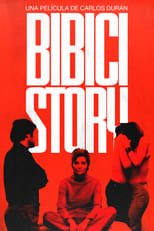
Title: BiBici Story
Released: January 1, 1969
Type: Movie
While waiting to get started on the production of his feature Liberxina 90 (1970), Carlos Duran shot this short (with very expressive support by several Escuela de Barcelona professors): a grimly colourful satire on modern society as such, and on its fascist Spanish variety in particular. "The intrusion into the private life of a human being, of the distinct tendencies that exist in the society we live in, until they fall into chaos." Carlos Durán

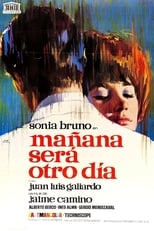
Title: Tomorrow Is Another Day
Character: Mario (uncredited)
Released: January 1, 1967
Type: Movie
Paco and Lisa flee to Barcelona in a stolen car with the intention of building a future in show business. After unsuccessfully looking for work, the two youngsters will be immersed in crime and prostitution.
